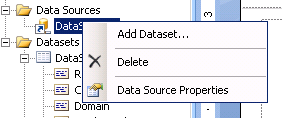This report can either be run standalone or as a drilldown report for my OSD - Overview report that i posted last week.
This report is brand new so there might still be some kinks that needs to be sorted out.
Features
If you run it standalone you get two dropdown list ,first you select the Task Sequence and Advertised collection ,then you get a list of only the computers that have ran that deployment(not every computer in your site as in the default reports)
The top part of the report tries to resolve some basic information about the computer to help troubleshoot. The information available will vary ,an unknown client won't have any information in the database an will be blank.
It will try to get Make and Model ,Active Directory DN and Chassis Type.(The picture will change based on chassis type)
Stuff you might want to change
This report might need some work to display correctly ,therefore I've included an unfiltered view on page two of the report that you can use to fine tune your report.The problem is that some steps have a StepID 0 or some other problem that's going to mess with the run time calculation.
For instance "Install Collection Software" will show a total run time for the action ,but each software will have it's own step with StepID 0 with it's own run time ,so if you include both it will look like the step took twice as long to complete.
Another Problem is that some steps like "Restart Computer" and "Setup Windows and Configuration Manger" show up twice ,it seems like the first line shows run time without the reboot and the second line shows time with the reboot. I haven't figured out how to fix this yet so for now you have to live with for now.(let me know if you figure out how to fix this....)
To get the report to work import it into your enviroment and change "datasource1"
To finetune the report you can edit the last line in Dataset1.
the "Not IN" clause is essentially a filter ,the 11xxx numbers are the LastMessageIDs you don't want to include.
AND tse.laststatusmessageid NOT IN
( 11138, 11139, 11140, 11141,11142,11143,11902,11904,11905 )
you might want to remove the 11902, 11904 and 11905 ,they are for the Install based on task sequence variable step.
Link the Reports
To link this report to the OSD -Overview report open the OSD-Overview in Report Builder and right click [Computername] in the Tablix and select properties.
Under Actions ,change the settings to point to this report.
Do the same for the databar in the tablix...
Hope these reports can help you shed some light on your OS Deployments ,let me know how it works out:-)
Here is the complete Query:
SELECT tse.step AS
TSStep,
tse.laststatusmessageid,
CASE
WHEN ( tse.laststatusmessageid >= 11120
AND tse.laststatusmessageid <= 11127 ) THEN tse.groupname
ELSE tse.actionname
END AS
NAME,
CASE
WHEN ws.timezoneoffset IS NULL THEN
Dateadd(minute, 120, tseprev.executiontime)
ELSE Dateadd(minute, ws.timezoneoffset, tseprev.executiontime)
END AS
StartTime,
CASE
WHEN ws.timezoneoffset IS NULL THEN
Dateadd(minute, 120, tse.executiontime)
ELSE Dateadd(minute, ws.timezoneoffset, tse.executiontime)
END AS
EndTime,
--dateadd(minute,ws.TimezoneOffset,tseprev.ExecutionTime) as StartTime,
--dateadd(minute,ws.TimezoneOffset,tse.ExecutionTime) as EndTime,
CASE WHEN Datediff(dd, tseprev.executiontime, tse.executiontime) > 0 THEN
Cast(
Datediff(dd, tseprev.executiontime, tse.executiontime) AS VARCHAR(2)) +
'd '
ELSE '' END
+ CONVERT(CHAR(8), tse.executiontime - tseprev.executiontime, 108) AS
TotalTime,
tse.exitcode,
tse.actionoutput
FROM v_taskexecutionstatus tse
INNER JOIN (SELECT Max(executiontime) AS Time,
advertisementid,
resourceid
FROM v_taskexecutionstatus
WHERE laststatusmessageid = 11140
AND step = 0
GROUP BY advertisementid,
resourceid) tsstart
ON tse.advertisementid = tsstart.advertisementid
AND tse.resourceid = tsstart.resourceid
AND tse.executiontime > tsstart.time
LEFT OUTER JOIN v_taskexecutionstatus tseprev
ON tse.advertisementid = tseprev.advertisementid
AND tse.resourceid = tseprev.resourceid
AND tseprev.executiontime >= tsstart.time
AND tseprev.executiontime < tse.executiontime
AND ( ( tse.step = 0
AND tseprev.step = 0
AND tseprev.laststatusmessageid = 11140 )
OR ( tse.step > 0
AND tseprev.step = tse.step - 1
AND tseprev.laststatusmessageid NOT IN (
11138,
11139, 11140, 11141,
11142,
11143 ) ) )
JOIN v_r_system sys
ON tse.resourceid = sys.resourceid
LEFT OUTER JOIN (SELECT resourceid,
timezoneoffset
FROM v_gs_workstation_status) ws
ON ws.resourceid = sys.resourceid
WHERE tse.advertisementid = @AdvertID
AND sys.netbios_name0 = @ComputerName
AND tse.laststatusmessageid NOT IN ( 11138, 11139, 11140, 11141,
11142, 11143, 11902, 11904, 11905 )












